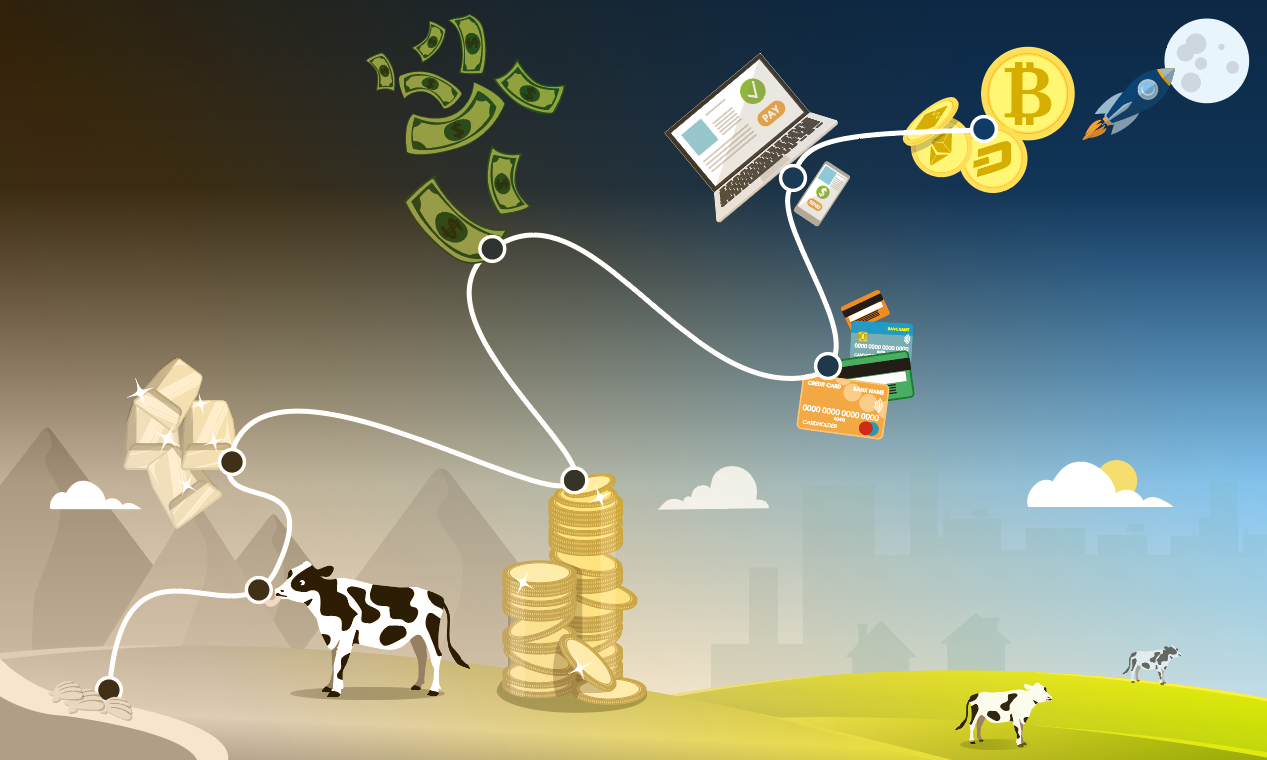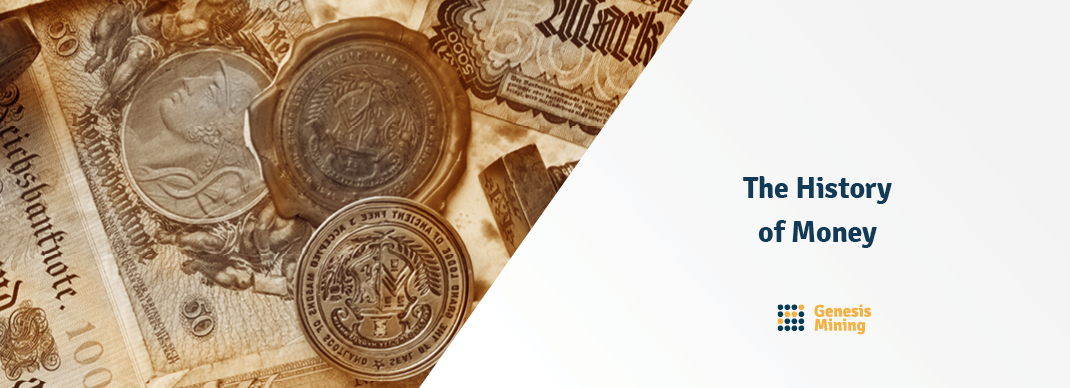[ad_1]
Dollars, Bitcoin, Euros, cash. There are countless ways to refer to the entity that makes the world go ‘round, and there are even more ways to measure its worth. Whether you are exchanging it for a roof over your head or the dinner on your table, money in its many forms is the centrally defining theme that connects the world and defines the quality of our lives.
Even our health — the only thing that anyone even pretends is more important on a day-to-day basis than money — can be contingent on the amount of money we have.
So what do we actually know about money, being so important as it is? What can the average person, who relies so consciously on money in virtually every aspect of their life, tell you about how the money we use today came to be?
A study that we conducted, How Well Do Americans Understand Money, suggests that the average person knows fairly little about how our financial system came to be. Let’s change that by taking a jaunt down the historical path that money followed from its original state to its current forms.
Bartering: Before Money Was Money
Before we had the resources to mass produce coins and bills or credit cards and Bitcoin mines, our ancestors relied on a bartering system where commodities were exchanged for other goods and services.
Instead of exchanging money as we know it today, those in need of wheat would trade something of value that the wheat producer desired — precious metals, wood-fashioned utensils, or whatever they had to offer. This bartering system is the original form of exchange that predates money as we know it.
The obvious problem with bartering: if you didn’t have something that the seller valued, you were S.O.L., left without the good or service that you needed unless you could find another seller who wanted what you were offering. And, even if you were able to secure a deal, you’d ultimately have to schlep whatever you traded or traded for (fifty pounds of salt, for example) in order to consummate the deal. This just wasn’t practical, and so bartering went out of style when a more practical form of money emerged.
Coins and Paper Bills
Metal money is thought to have been introduced circa 5,000 B.C., and the first coins designed as a medium of exchange are attributed to the Lydians in 700 B.C. Metal was an obvious choice as the basis for coins, as it was relatively cheap, could be fashioned easily into coins, and perhaps most importantly, was available in large quantities.
Other nations began minting their own currency soon after the Lydians did, and those nations tied the prices of goods to the value of their coins, creating a universal medium of exchange that facilitated trade and economic activity on a level that barter systems could not.
The origins of paper money are most commonly tied to China circa 960 A.D., though some point to the use of paper receipts in modern-day Iraq as the first iterations of paper-based exchange.

Money Becomes Representative, Instead of Inherently Valuable
In its early stages, coins often had inherent value — that is, the metal that the coin was made of had a certain value, which was reflected in the coin’s purchasing power. Eventually, coins came to take on a representative value, which meant that they could be made out of practically anything so long as the value they represented was honored in the marketplace.
These representative coins were a precursor to later forms of currency, such as the U.S. dollar and other international currencies when they were tied to a gold standard. Though a paper dollar or a dime was not worth much in a vacuum, the idea that each of those dollars and coins were backed by actual gold in a reserve somewhere gave each bill or coin representative value.
Eventually, this representative value of money tied directly to a real, tangible asset such as gold gave way to the fiat currency we use today.
The Rise of Fiat Money
When the United States took the first steps towards abandoning gold-backed currency in the 1930s, and rang the death knell for the gold standard in the early 1970s, it ushered in the era of fiat money, or as some might refer to it, funny money.
Fiat money is not backed by any tangible asset. Instead, it derives value from a government’s decree that the money has value. People follow the lead of the government, exchanging money for goods and in doing so, proving that the money does in fact have value.
However, even mild cases of inflation show how tenuous the “value” of fiat money can be, especially when a government can no longer pay its own debts and the people’s faith in their economic system collapses.
Next-Gen Money Such as Bitcoin
Through debit and credit cards and online banking and trading, money has taken on distinctly plastic and digital qualities. These mediums of exchange are mere extensions of the fiat, credit and debt-reliant financial systems that we embraced when we left the gold standard.
Bitcoin and other cryptocurrencies represent an entirely new paradigm for the global financial system, and in some ways they are a nod to the past, when currency was backed by tangible measures of value.
Blockchain-based digital currencies such as Bitcoin emerged in 2009, and their premise is that the value of each digital coins comes from the number of users, or nodes, in a given blockchain. Bitcoin and other cryptocurrencies are also inherently scarce, as they were limited to a set amount upon creation. That cryptocurrencies require increasing amounts of energy and computing power to be mined over time adds to their inherent value.
In some ways, Bitcoin represents a return to the past, to a time when money had real, inherent value. Some might even say money’s come full circle.
[ad_2]
Source link



